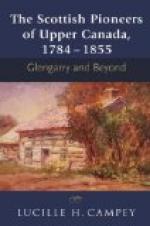[Footnote 5: Antonio Zeno served as pilot to Earl Sinclair of the Faeroe Islands and of Roslyn, a Norman-Scottish nobleman who owed joint fealty to the kings of Norway and Scotland. Sinclair was so impressed with the stories of a “Newland” beyond Greenland that he sailed to find it about 1390, but only reached Greenland.]
Christopher Columbus, the Genoese, conceived a similar idea, which also may have owed something to the tradition of the Norsemen’s discovery of Vinland. But Columbus’s theories were based on better evidence, such as the discovery on the coasts of the Azores archipelago, Madeira, and Portugal of strange seeds, tree trunks, objects of human workmanship, and even (it is said) the bodies of drowned savages—Amerindians—which had somehow drifted across, borne by the current of the Gulf Stream, and escaping the notice of the sharks.
Whilst Columbus was bestirring himself to find Asia across the Atlantic, a sea pilot, JOHN CABOT (Zuan Cabota)—Genoese by birth, but a naturalized subject of Venice—came to England and offered himself to King Henry VII as a discoverer of new lands across the ocean. At first he was employed at Copenhagen to settle fishery quarrels about Iceland, and probably Cabota, or Cabot, visited Iceland in King Henry’s service, and there heard of the Icelandic colonies on the other side of the Atlantic, only recently abandoned.
In 1496 King Henry VII provided money to cover some of the expense of a voyage of discovery to search for the rumoured island across the ocean. The people of Bristol were ordered to assist John Cabot, and by them he was furnished with a small sailing ship, the Matthew, and a crew of fifteen mariners. Cabot, with his two sons, Luis and Sancio, sailed for Ireland and the unknown West in May, 1497, and, after a sea voyage quite as wonderful as that of Columbus, reached the coast of Cape Breton Island (or “the New Isle”, as it was first named[6]) on June 24, 1497. They found “the land excellent, and the climate temperate”. The sea was so full of fish along these coasts that the mariners opined (truly) that henceforth Bristol need not trouble about the Iceland trade. Here along this “new isle” were the predestined fisheries of Britain.[7]




